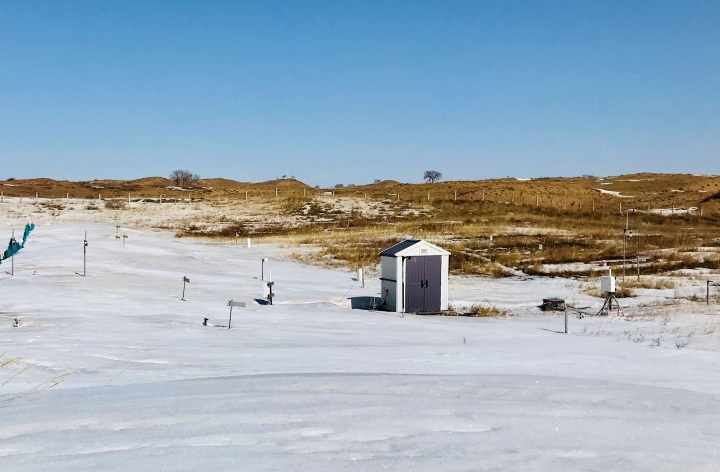Ping Li, Emma J. Sayer, Zhou Jia, Yuntao Wu, Meifeng Deng, Xin Wang, Chao Liu, Bin Wang, Yang Wang, Yongfei Bai, Lingli Liu

Strong winds can erode the soil surface in arid and semi-arid ecosystems by blowing away fine soil particles. As these particles contain carbon, wind erosion inevitably causes large loss of soil carbon. Plants help stem erosion by reducing wind speed at the soil surface, so most of the soil carbon loss occurs during the non-growing season when there are fewer plants. Land uses like grazing or mowing can worsen soil carbon loss by removing vegetation, but winter snow cover can act as a protective ‘blanket’, which reduces erosion. Intriguingly, deep winter snow might also reduce soil carbon loss during the growing season, because the melt-water in spring boosts plant growth. We wanted to find out if deep winter snow cover reduces the soil carbon loss caused by intensive land use. We used snow fences to create deep-snow plots, which we compared to controls with normal snow cover. In each of the plots, we applied mowing treatments to simulate different land-use intensities: heavily mowed, moderately mowed, and unmowed areas. We measured changes in soil depth, soil carbon, plant biomass, surface roots, and vegetation structure for six years. As expected, most of the soil carbon loss occurred during the non-growing season, but mowing accelerated carbon loss in the plots with normal snow cover. We found that greater plant biomass, surface roots, and a complex vegetation structure all helped reduce soil carbon loss. The structure and biomass of the vegetation were most important for reducing soil erosion, because dense plants and a complex canopy act as a buffer to reduce wind speed at the soil surface. Deep winter snow reduced soil carbon loss by boosting plant growth and biomass, which in turn created a complex plant canopy. Consequently, although intense land-use accelerates soil carbon loss by removing plant biomass, deep winter snow can alleviate some of the soil carbon loss by boosting plant growth in spring. Our research highlights the importance of the vegetation in stemming soil erosion and reveals an important role for snow cover in preserving soil carbon in arid and semi-arid grasslands.